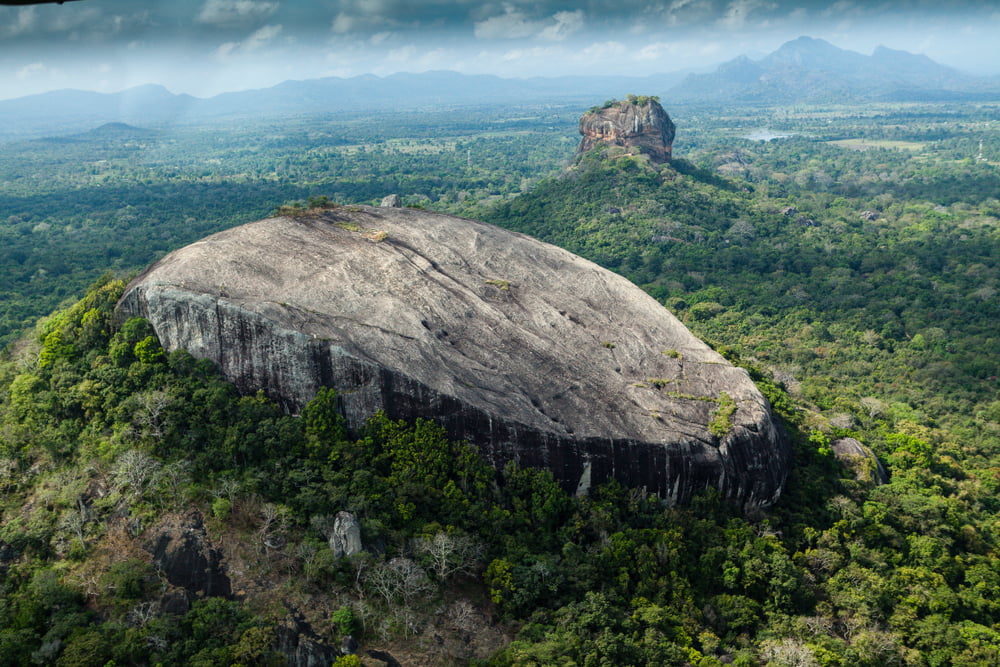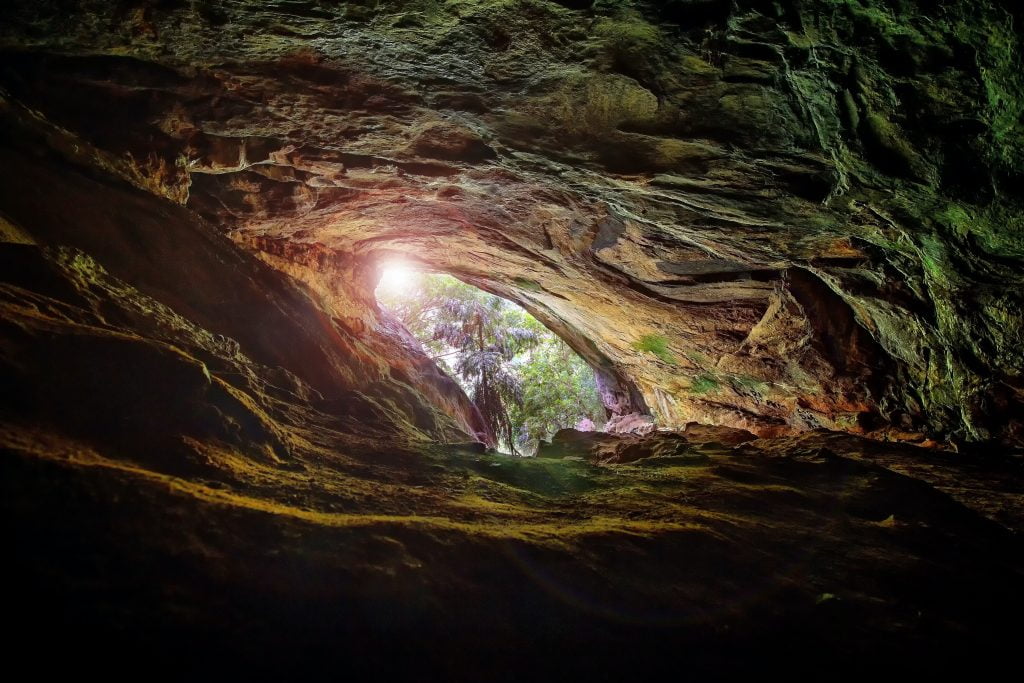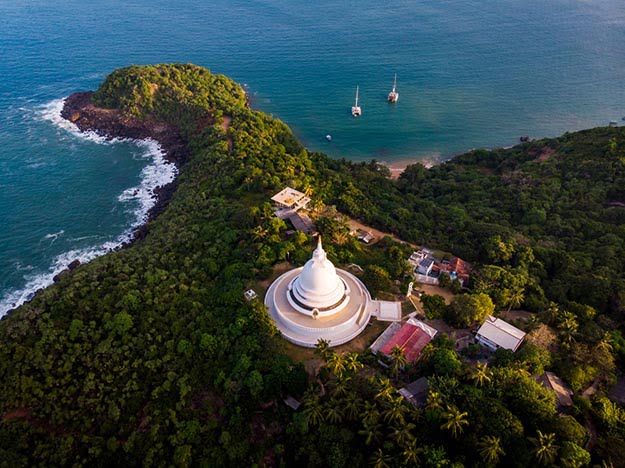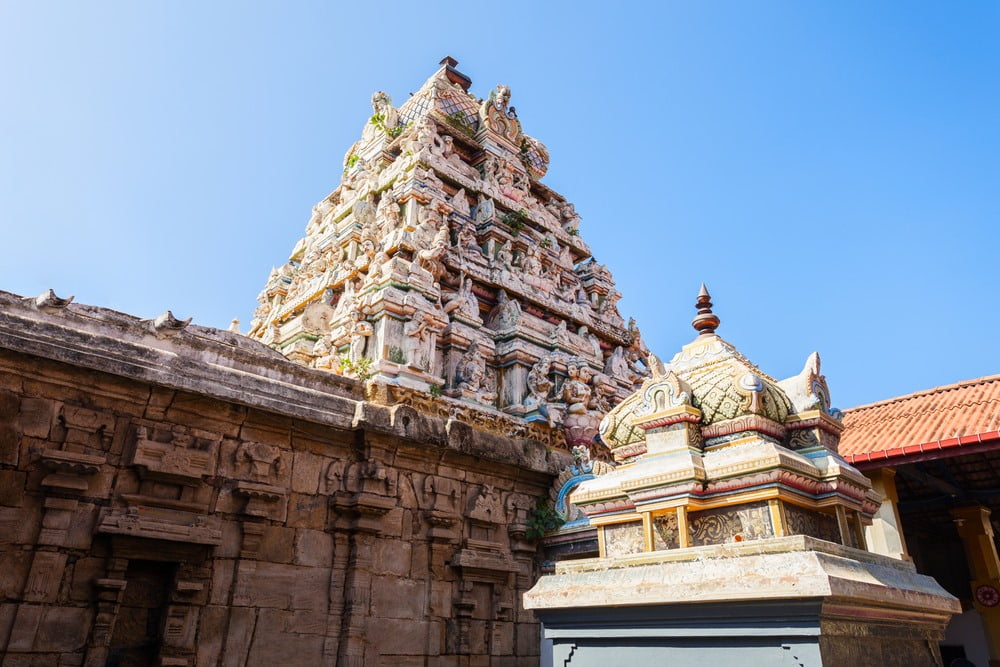
In the epic Ramayana, Sri Lanka recreates a vital role in shaping the novel. The place of King Ravana is defined as an island with residences and castles made of gold. Rama's troops constructed a bridge on the ocean to cross over. They ultimately defeated Ravana and carried Sita home. Visit Sri Lanka and Discover the Ramayana trail.

The Ramayana trail begins in the north region of Sri Lanka, where the Ram Sethu joins Sri Lanka with India.
The remote island of Mannar, accessible from the Sri Lankan mainland by a causeway, examines like a city at the planet's border.
Deserted in most parts with a lighthouse dominating the unobstructed, oxidised pier, you can consider the remains of the bridge in the shape of shallows expanding into the Indian Ocean, connecting it to Rameshwaram and Dhansukodi in India from atop the Dutch fort.
The Ram Sethu was discovered artificial and paved the way for the Vanarsena to pass over onto Lanka.
Koneswaram Temple is above the ridges at Trincomalee, a famous tourist city on the coast of eastern Sri Lanka. The untouched panoramic splendours of Trincomalee make it one of the most attractive locations in Sri Lanka.

The journey then moves to the Eastern part. Set in the low mountains just outside Kandalama in Dambulla, the ruins of Sigiriya are considered to be Ravana's palace and can be accessed by a flight of stairs numbering more than a thousand.
Ramayana talks of Ravana's mighty aircraft, The Pushpak Vimana. It is expressed that Ravana had six airfields with many other mythological flying aeroplanes and chariots that he succeeded from Gods and other kings in the combats. Thotupola Kanda is one of the six airfields. After Ravana kidnapped Goddess Sita, he disembarked here.
Thotupola Kanda is the third-highest mountain peak in Sri Lanka and is a famous trekking location. Hiking to Thotupola Kanda is one of the many adventurous items in Sri Lanka.
Although just a few remnants of a colossal rock citadel exist from the 5th century, this 'lion paw’-shaped fort has also been considered to be built by King Kasyapa.
While the walls feature quite a few paintings akin to the Gupta-style images at the Ajanta caves, the museum near the bottom of the staircase showcases the beauty of royal architecture and an ingenious hydraulic system that ferried water from the nearby ponds to the top of the mountain.

To get rid of this dosha, Rama stops here, prays to Shiva and establishes Shiv Lingas, which have been recently completed into typical Dravidian style temples replete with a plethora of colours and statues within them.
The British settlers may have loved the incredible mountains of Nuwara Eliya a bit down south in the 18th century as they grew the world-famous Ceylon tea and made enormous profits. Still, the hills are rumoured to be part of the beautiful Ashoka Vatika, where Ravana had kept Sita captive.
Although the marvellous gardens have turned into thick forests, the Hakgala Botanical Gardens offer the beauty of the Vatika in all its glory.
A trip to Nuwara Eliya cannot be complete without a visit to one of the famous Sri Baktha Hanuman Temple in Ramboda. On these cliffs of Ramboda, where Hanuman was exploring for Sitadevi, the Chinmaya task of Sri Lanka constructed a temple with Hanuman as the presiding divinity. On full moon day each month, certain poojas are functioned and witnessed by thousands of believers.
The Seetha Amman Kovil temple retains quite an importance in the novel as it is considered to stand where Hanuman encountered Sita for the only time in AshokaVatika while reassuring her of his struggles to liberate him.
The temple, accomplished across two levels over the river, is sheltered with golden-coloured sculptures of symbols from the epic. On looking down from the lower level, you will be competent to see the demarcated footsteps of Lord Hanuman. The location furthermore earns significance because there is a summit peak in the shape of Hanuman.
Ravana waterfalls in Ella believed that Sita bathed in a waterhole that got the water falling from this waterfall. You can also visit Ravana caves that are around Ravana falls. The Ravana cave consists of a part of the tunnel connected to the Ravana Falls in Ella. Tales say King Rama of India had a beautiful wife, Queen Sita. So he kidnapped Queen Sita, brought her to Sri Lanka and hid her in the Ravana caves. The tunnels functioned as a quick conveyance through the cliffs and a hidden route. And believe tunnels connect all the important cities in Sri Lanka. A more intimate gaze at these underpasses reveals that they are artificial and not just natural appearances. The architectural elements of these tunnels demonstrate the intelligent way of construction by King Ravana.

Rumassala rock is one of the five Sri Lankan sites from parts of Mount Dronagiri. They fell when Hanuman carried the Dronagiri on his flight back to Lanka to use its Sanjiwani herb to rescue Lakshmana and Rama. They needed this medical plant to be reanimated after suffering painful wounds. Rumassala is also said to be a place of Sita during her visit to Lanka.
Another critical place called Seenigama Devalaya was the landing place from where Sugriva, King of the Varanas and their monkey army, undertook his attack on Ravana's affliction troops.

One of the paces found just on the outskirts of Colombo, and the Vibhishana Palace is considered to have been granted to Ravana's brother after the defeat of Lanka by Ram. Although it now stands as a Buddhist temple called Kelani Viharaya with numerous sculptures and artworks of Lord Buddha embellishing the walls, it remains one of the main attractions where thousands of tourists throng every year.
Lord Ram won his war with Ravana; he established a Shiva Lingam at Manavari and sought Lord Shiva's blessings. It is known as Ramalingam Manavari Temple and is located in Chilaw, a town of great mythical significance and is one of the premium sites for The Ramayana trail.
Known for its fantastic food and ambience, Millions of Hindu tourists visit Chilaw every year.
Munneshwaram Temple is furthermore a destination of importance to Hindu pilgrims. Lord Shiva advised Rama to build lingams for him to find penance from the curse of killing a Brahmin.
Article by
Ravindu Dilshan Illangakoon
As co-founder and Head of Content at Sri Lanka Travel Pages, I ensure that every blog post we publish is AMAZING.
Also Read
40 Places to Visit in Ella and Surrounding Areas
Ella, Sri Lanka, is a little hamlet in the hills, home to various attractions, including…
32 Places to Visit In Nuwara Eliya
Nuwara Eliya town and the surrounding area are one of the most vibrant locations in…
16 Places to Visit and Things to do in Mirissa
About Mirissa Mirissa is one of the most famous beachfront destinations In the South of…

